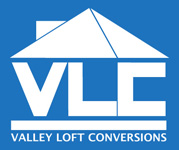Loft Conversion Types
Please see a range of loft conversion options below.Rear Dormer Conversion
A Rear Dormer loft conversion would be the most common type of loft conversion which creates maximum floor space and height possible (within permitted development rights). Valley Loft Conversions we will talk with you to create a conversion that will be tailored to suit your requirements. It is often possible to construct a rear dormer without need for planning permission contact us for more information.


Side Dormer Conversion
Semi-detached houses with hipped roofs often require a Side Dormer if a Hip to Gable Conversion is not the best option.
This will be discussed with you at the time of the first quotation visit, where upon it will be ascertained as to which design would best suit your home and fit with the asthetics of the surrounding area.
Give our friendly team a call
020 8366 5273
Hip-to-Gable Conversion
Hip-to-Gable loft conversion will involve changing the sloping roof line on the side of your property by extending the existing ridge line and then constructing the side of the house to a gable end. The gable can be brick built if required to match existing face brickwork.
However most commonly it would tend to be built in timber, faced with structural ply work and then a sand/cement screed would applied. This usually is a much better option than a side dormer which is usually created to allow for the minimum height building regulations regarding the installation of the new staircase. This may often be a better alternative to a side dormer and in many cases will create more space.
It is often possible to construct the above dormers without the need for full planning permission.


Mansard Dormer Conversion
A Mansard Dormer would be where the dormer is a roof with a double pitch (slope). The pitch of a Mansard roof is usually changed to approximately 70 degrees to create the maximum possible space within the new conversion.
The exterior is finished using existing tiles where possible or a close match to the existing roof.
You would usually find this type of conversion within a conservation area or where a conversion requires full planning permission to gain the necessary head height to allow for a adequate living space.
Velux Loft Conversions
Velux Conversions would be where the original roof line is not altered a suspended floor added and a room is created in your existing loft space.
Pro’s: Can be a cost effective way of adding an extra space. Often used if planning an issue.
Con’s: This type of loft conversion not usually classed as an extra bedroom by estate agents. There is a must before construction to ensure that before construction that there is not an issue with head height due to the pitched roof line/sloped ceilings, which unfortunately in these type of conversions unless the existing timber ridge is of adequate height there would usually be an issue with the slopes or it would seriously impede on the amount of ‘use-able’ floor space.
Need extra space in your home?
Call us or use the contact form below to arrange to book a free initial survey appointment to explore the possibilities for your loft space.

